Who Made Gartner’s Magic Quadrant: Top Data Integration Tools In 2021
These 18 developers of data integration tools include industry giants IBM and Oracle, established data integration technology developers such as Informatica and Talend, and more recent entrants into the data integration space. Here’s a look at how they are positioned in the fast-changing data integration arena.

Making The Connection
As data proliferates across on-premises and multi-cloud systems, integrating data from multiple disparate sources for operational and analytical tasks has become a major challenge.
Gartner estimates that the market for data integration tools grew at 6.8 percent in 2020, down slightly from 7 percent in 2019 and was largely not impacted by the COVID-19 pandemic and resulting economic downturn.
“This is because data integration is key to running mission-critical systems – not a luxury/discretionary tool purchase,” the market research firm says in the recently released Gartner 2021 Magic Quadrant for Data Integration Tools report.
The Gartner report takes a look at 18 vendors in the data integration arena, identifying the leaders, challengers, visionaries and niche players in the data integration space.
A number of vendors, including companies like Matillion and Fivetran, focus specifically on data integration products. A number of business intelligence software companies like Qlik and Tibco provide data integration tools as part of their product lineups. And major vendors like IBM, Oracle and SAP recognize the importance of data integration in supporting IT operations and initiatives.
For solution providers, data integration tools have become a critical component of IT service practices in data management, business analytics, application integration, cloud migration and digital transformation. The report offers insight into which companies solution providers should consider partnering with – and why.

Data Integration Market Mega Trends
Data integration tools are a key component in data engineering, operational data integration and cloud migration scenarios and in data fabric architectures.
The market for data integration tools is “seeing renewed momentum, driven by requirements for hybrid and multi-cloud data integration, augmented data management, and data fabric designs,” according to the Gartner report.
“Gartner sees that the urgent need to acquire and integrate data across multiple CSPs [cloud service providers], typically for hybrid cloud and intercloud integration, is becoming crucial to many data integration use cases. The COVID-19 pandemic has accelerated the movement to the cloud, and data integration tools are leading the way to support this shift,” the report said.
Many businesses and organizations today are “looking to utilize their data integration tools to ingest or replicate the data from their operational DBMSs to cloud data warehouses” supported by database platforms as-a-service, according to the Gartner Report.
The report notes that market leaders are losing ground to smaller vendors: The top five data integration market share leaders held a collective market share of 71 percent in 2017 – a number that dropped to 26 percent in 2020.
The Gartner report says that by 2023 AI-enabled automation in data management and integration will reduce the need for IT specialists by 20 percent.

Data IntegrationMagic Quadrant Methodology
Gartner defines data integration “as the discipline comprising the architectural patterns, tools and methodologies that allow organizations to access, harmonize, transform, process and move data spanning various endpoints and across any infrastructure.”
The market research firm says the market for data integration tools includes vendors “that offer a stand-alone software product or products used to enable the construction and implementation of data access and data delivery infrastructure for a variety of data integration scenarios.”
The data integration software category includes tools with support for bulk/batch data movement, data virtualization, data replication and synchronization, stream data integration and data services orchestration.
Tools covered in the Magic Quadrant report offer capabilities such as data movement topology, complex data transformation, augmented data integration support, metadata and data modeling support, data preparation capabilities, design and development support, DataOps support, integration portability, data quality and governance support, runtime platform support, service enablement support, API services, a range of connectors and adaptors, and support for delivery of data integration functionality as cloud services.
Vendors must also meet a number of revenue or customer count, geographic, and market presence thresholds to be included.
Vendor positioning in the magic quadrant is determined by two axes: vendors’ ability to execute and their completeness of vision. Based on the analysis results vendors were identified as leaders, challengers, visionaries or niche players.
Evaluation criteria for a vendor’s ability to execute cover a company’s products and services, sales and marketing execution, pricing, market responsiveness and track record, customer experience, operations and overall viability. Evaluation criteria for a vendor’s completeness of vision include market understanding and strategy, sales strategy, product strategy, business model, innovation, vertical market and industry strategy, and geographic strategy.
Vendors in the Leaders quadrant “are focused on new demands for automation in various aspects of data integration,” the Gartner report said. These include design, ingestion, schema mapping, schema drift detection and corrections, next-best transforms, automated lineage and impact analysis, and infrastructure management and orchestration. “These capabilities for augmented data integration demand a new data integration design – one that supports a balance of connect and collect data integration strategies,” according to Gartner.
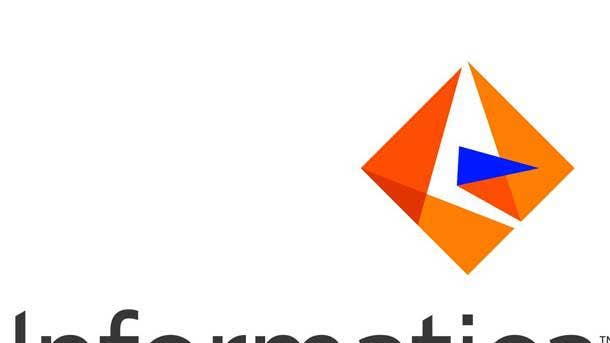
Leader: Informatica
Informatica, a pioneer in the data integration space, is the clear winner in this year’s Data Integration Magic Quadrant, positioned in the Leaders quadrant furthest along both the “ability to execute” and “completeness of vision” axes.
Informatica offers a number of data integration tools as part of its Intelligent Data Management Cloud portfolio including Informatica Intelligent Cloud Services (which includes Cloud Data Integration, Cloud Integration Hub and more), Data Engineering Integration, Enterprise Data Preparation, Enterprise Data Catalog, PowerCenter and PowerExchange and other software. The Redwood City, Calif.-based company’s customer base is more than 10,000 organizations.
Strengths: Informatica’s product investments are aligned to the data fabric vision, according to Gartner, including the Informatica CLAIRE active-metadata-based AI and machine learning engine for enabling data integration design and delivery automation. The company is strong in data engineering use cases with its scalable, high-performance data engineering tools. And the company effectively provides its data integration technology for operational use cases, going beyond just analytics and data science tasks.
Cautions: Gartner said customers face challenges with manual migrations from the older PowerCenter to Informatica Intelligent Cloud Services. The Magic Quadrant report said there is less visibility and understanding of Informatica’s new consumption-based pricing model. And some customers are asking for better DataOps capabilities.
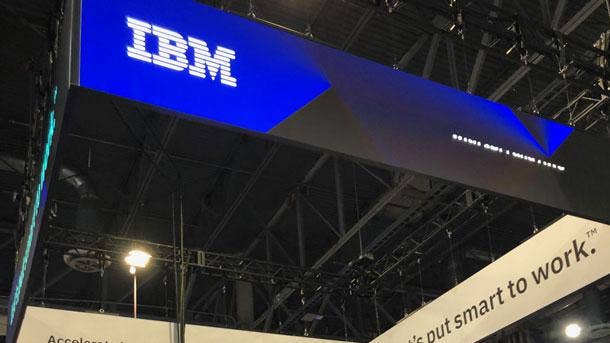
Leader: IBM
IBM is just below Informatica on the “ability to execute” axis in the Leaders quadrant and just behind on the “completeness of vision” axis. The company’s data integration product portfolio includes IBM Cloud Pak for Data, IBM Data Replication and IBM Data Virtualization Manager. The Armonk, New York-based company’s customer base for its data integration products is more than 11,000 organizations.
Strengths: IBM’s modular architecture supports intercloud and hybrid integration patterns and is delivered on the Red Hat OpenShift platform. The Gartner report says IBM’s data integration software offers strong support for DataOps and the company’s product capabilities support the data fabric with data integration design and delivery automation and support for combining different data delivery styles including batch, streaming and virtual.
Cautions: Gartner says there are customer “challenges” in understanding changes in product licensing when upgrading to Cloud Pak for Data and when licensing tools like DataStage. The Magic Quadrant report also cites the “low visibility and understanding” of IBM’s data preparation capabilities to support data integration. And some customers say upgrading to the latest IBM data integration software, including Cloud Pak for Data, is difficult.
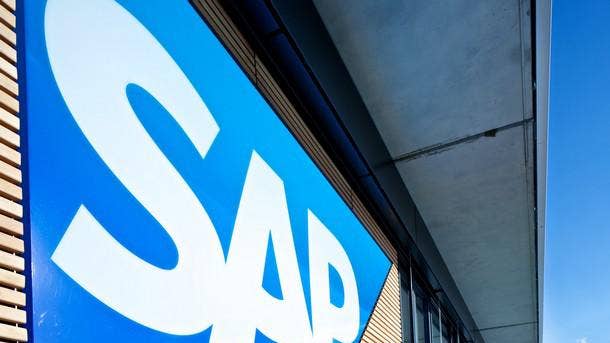
Leader: SAP
The software application giant is also a major player in the data integration space with its SAP Integration Suite, SAP Data Services, SAP Data Intelligence, and SAP Landscape Transformation Replication Server, in addition to integration capabilities built into the SAP HANA platform. The company, based in Waldorf, Germany, has a customer base of more than 74,000.
Strengths: Gartner says that SAP’s product strategy is “focused on unification, hybrid and scale,” providing an end-to-end integration strategy by enabling them to combine and switch between multiple integration styles across on-premises and cloud systems. The company caters to the data processing needs of enterprise-wide users, according to the Magic Quadrant report, and provides industry-specific domain expertise and integration solutions with pre-defined data flows.
Cautions: New customers can struggle with initial system setup complexities, according to the report, and some face challenges with limited integration between SAP’s data integration software and non-SAP products. The report also said customers complain about high pricing and a longer time to achieve ROI objectives.

Leader: Oracle
Database, application and cloud software vendor Oracle is also in the Leaders quadrant with its Oracle GoldenGate platform, Oracle Data Integrator, Oracle Big Data SQL, and data integration services within Oracle Integration Cloud and Oracle Cloud Infrastructure (OCI) Data Integration. The Redwood Shores, Calif.-based company’s customer base for these products is more than 15,000 organizations.
Strengths: Gartner says Oracle has a strong product portfolio for supporting data fabric designs with specific products like OCI Data Catalog. Oracle provides “balanced support” for all data delivery styles including batch, replication, streaming and data virtualization. And the company’s enterprise-grade products are capable of handling mission-critical workloads with strict SLAs for uptime and the ability to handle replication across complex data ecosystems.
Cautions: Gartner cites the perception that Oracle data integration products are OCI-centric and the vendor needs to educate the market that its products work well on a stand-alone basis. The report says there is a market perception – especially among SMBs – that Oracle data integration products are higher priced than the competition. And Oracle’s Big Data SQL product has limited market traction as a stand-alone data virtualization product.
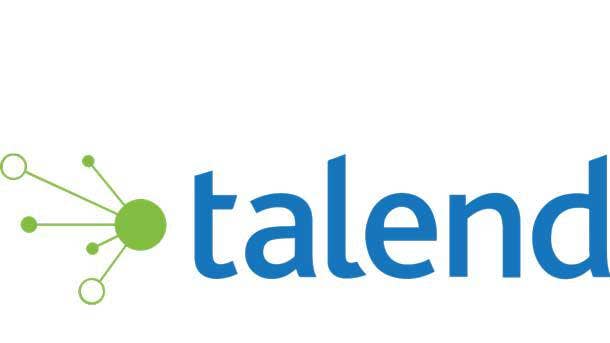
Leader: Talend
At the core of Talend’s data integration technology lineup is the Talend Data Fabric platform, which includes a number of data integration, data quality, application integration, data integrity and data governance products. The Redwood City, Calif.-based company has more than 6,000 licensed customers using its data integration products.
Strengths: Talend takes a governed approach to the operationalization of self-service data preparation for non-technical users with such tools as its Stitch Data Loader, Talend Data Inventory, Talend Data Catalog and Talend Data Preparation. The company provides strong capabilities for data engineering use cases, according to Gartner. And Talend has “significantly upgraded” its support for DataOps within Talend Data Fabric, the Magic Quadrant report says.
Cautions: The Gartner report says Talend faces a number of post-sales support challenges including the need for a more comprehensive online product documentation guide and faster turnaround for software issues and bug fixes. The company’s data replication product has limited market traction, according to Gartner, and there are “challenges with licensing and packaging clarity.”
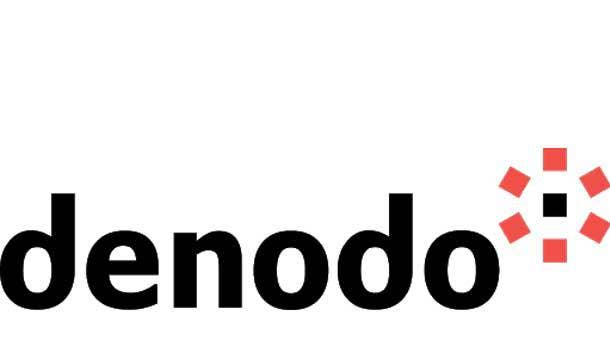
Leader: Denodo
Denodo is the lowest on the “ability to execute” axis in the Leaders quadrant and ahead of only Microsoft on the “completeness of vision” axis. The Palo Alto, Calif.-based company has over 900 customers using its Denodo Platform data integration tool.
Strengths: Denodo’s product strategy is focused on logical and distributed architectures, according to Gartner, enabling customers “to connect distributed data through business-friendly semantic models that de-couple data” from location and physical schemas. Denodo has shown improvement in its R&D efforts, the Magic Quadrant report says, and customers give the company high marks for its pre-sales support and proof-of-concept activities.
Cautions: Denodo provides limited support for diverse data integration styles and does not support change data capture within its data integration software, the report says. Global federated deployments require manual configuration and data security configuration can be “challenging.”

Leader: Microsoft
Microsoft moved into the Leaders quadrant in the 2021 Data Integration Magic Quadrant report after being in the challenger quadrant in 2020. But the company is lowest on the “completeness of vision” axis among the seven companies in the Leaders quadrant and ahead of only Denodo on the “ability to execute” axis.
Microsoft’s chief offerings in data integration is its SQL Server Integration Services (SSIS) tool for on-premises data integration tasks and its Azure Data Factory (ADF) that offers Azure-based data integration capabilities. (Microsoft does not disclose the number of customers using these products.)
Strengths: Microsoft’s data integration products win high scores from customers for their low total cost of ownership, ease of use, data delivery and ability to integrate with other Microsoft products. Broad familiarity with implementing Microsoft technologies is spurring increased adoption of Azure Data Factory, as is that product’s low-code/no-code capabilities, according to the Magic Quadrant report.
Cautions: The migration to the Azure environment has created some market perception that the company’s data integration tools have limited appeal outside of Microsoft-centric environments, the report says. Customers, especially those lacking experience in “artifacts migration” between deployment choices, are seeking easier implementation capabilities – including for multi-cloud and intercloud environments.
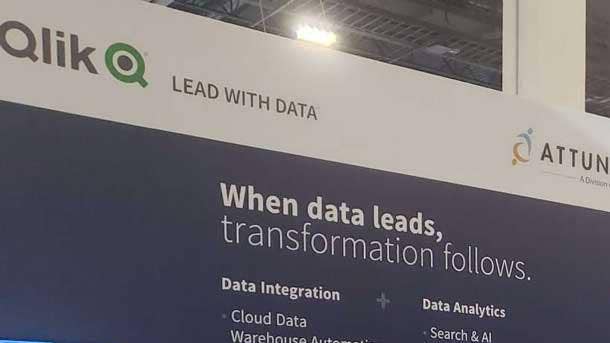
Challenger: Qlik
Qlik ranks highest among the four companies in the Challengers quadrant on the “ability to execute” axis and slightly behind SAS and TIBCO Software on the “completeness of vision” axis.
Business analytics software company Qlik acquired Attunity, a developer of data integration and management software, in May 2019. That provided the company with its Qlik Replicate, Qlik Compose, Qlik Catalog and Qlik Enterprise Manager products. The company, based in King of Prussia, Pa., recently acquired Blendr.io for support for integrating cloud data and API sources. Qlik’s customer base for its data integration products today is more than 3,000 organizations.
Strengths: Qlik offers strong data integration functionality in the key areas of data replication and synchronization applied to heterogeneous data types, including mainframe and SAP application data, according to Gartner. Qlik tools, with their role-based interface, provide productivity gains for multiple types of users including data integration specialists and less technically skilled people. And Gartner says that Qlik’s data integration tools can be easily installed, configured and operated within incumbent infrastructure.
Cautions: While Qlik has “well-established” market traction for its data replication offerings, its breadth of market coverage in other data delivery styles is more limited, Gartner said. Some customers are looking for more guidance in implementation practices. And finding skilled people to deploy and operate Qlik’s products is said to be a challenge.

Challenger: SAS
SAS moved from the Leaders quadrant in the 2020 Magic Quadrant for Data Integration Tools report to the Challengers quadrant in this year’s report.
SAS, a long-time heavyweight in business analytics, also provides a range of data integration software including SAS Data Management, SAS Data Integration Studio, SAS Federation Server, SAS/ACCESS in SAS Viya, SAS Data Loader for Hadoop, SAS Data Preparation on SAS Viya and SAS Event Stream Processing on SAS Viya. The Cary, N.C.-based company’s customer base for the products is approximately 16,000 organizations.
Strengths: SAS offers enhanced support for diverse user persona including ETL developers, data engineers, data stewards, business analysts and business users, positioning the company for the trend toward “data democratization,” the Magic Quadrant report says. SAS software enables execution of complex data transformations within an execution engine such as Spark or Hadoop. And customers give SAS high marks for its professional services.
Cautions: Gartner says SAS has “limited vision” in offering stand-alone data migration tools as it converges capabilities within its data management and data analytics products. The market researcher also said the company lacks vision for supporting data fabric designs. And some customers say installing and configuring SAS products “can be challenging and time-consuming,” the report says.

Challenger: Tibco Software
On January 5 of this year TIBCO Software, based in Palo Alto, Calif., completed its acquisition of Information Builders (IBI) and that company’s data integration, preparation, governance and quality management tools.
Today TIBCO’s data integration portfolio includes TIBCO Data Virtualization, TIBCO Cloud Integration, TIBCO Cloud Metadata, TIBCO Messaging, TIBCO Streaming and TIBCO Omni-Gen. The company has more than 6,000 organizations using these products.
Strengths: TIBCO provides modular tools that support a “connect and collect” vision for data integration, according to the Magic Quadrant report, which also highlights TIBCO’s “leadership” in Internet of Things and streaming data scenarios. The company’s products also show improved bulk/batch data integration capabilities thanks to the acquisition of IBI and its Omni-Gen platform with its mature ETL capabilities for complex bulk/batch data integration.
Cautions: With many acquisitions over the years TIBCO’s data integration technology portfolio “has become quite complex” – which has led to the company’s efforts to
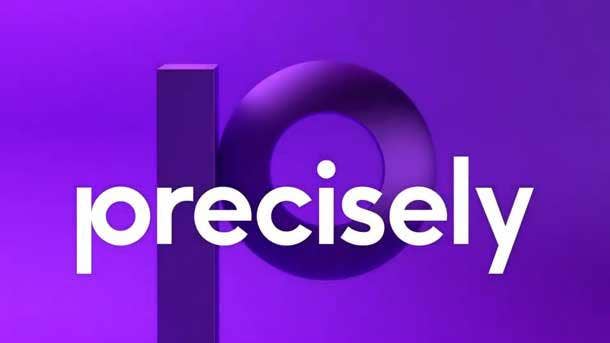
Challenger: Precisely
Precisely, formerly known as Syncsort, is the lowest on the “ability to execute” axis among the companies in the Challengers quadrant. The Burlington, Mass-based company has more than 2,300 organizations using its Connect, Ironstream and Spectrum products.
Strengths: Precisely’s strength is in providing its Connect technology for moving data from IBM iSeries and other mainframe systems into modern cloud data stores such as Snowflake for cloud migration projects, Gartner says. The company has strong potential for a data management platform play with its focus on data integrity. And Gartner says customers praise Precisely software for its ease of use.
Cautions: Precisely has acquired many data management vendors in the past few years, leading to a “lack of clarity” around its data management strategy, according to Gartner. The company does not offer augmented data integration capabilities and its software is not suitable for hybrid deployments.
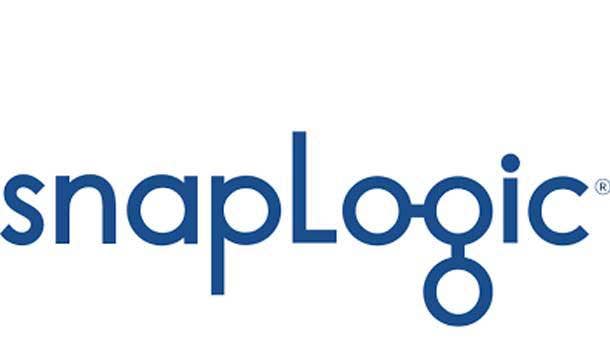
Visionaries: SnapLogic
SnapLogic is the only company that appears in the Visionaries Quadrant in the Gartner 2021 Magic Quadrant for Data Integration Tools report. The San Mateo, Calif.-based company offers the SnapLogic Intelligent Integration Platform for data integration tasks and has an estimated customer base of 1,100 organizations.
Strengths: SnapLogic’s focus on automation, ease of use and augmented data integration boosts the productivity of the company’s platform, the report says. SnapLogic has a simple pricing model and free trial version. And the company’s strategy of co-selling and co-marketing with cloud partners like AWS, Snowflake and SAP is effective.
Cautions: SnapLogic is perceived by some to be focused only on cloud data integration scenarios. The Gartner report said some customers are looking for more implementation guidance and support as deployment scenarios become more complex. And while SnapLogic supports data transformation for data profiling, customers are asking for more data governance and data quality capabilities and “collaborative operationalization in data fabric scenarios.”
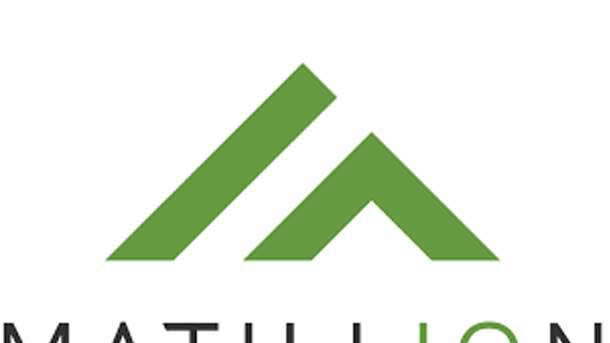
Niche Player: Matillion
Matillion leads the other companies in the Niche Players quadrant along the “completeness of vision” axis but is below several others on the “ability to execute to execute” axis.
Matillion has dual headquarters in Manchester, U.K. and Denver, Colo., and has more than 1,050 organizations using its Matillion ETL and Matillion Data Loader products. In September the company raised $150 million in Series E funding.
Strengths: Matillion’s product strategy is focused on cloud data engineering with an ETL engine that exploits the separation of storage and compute in the cloud. The Matillion Data Loader tool, meanwhile, is designed to be easily used by analysts and “citizen” data integrators. Software deployment options resolve common data sovereignty issues. And Gartner says the company and its product functionality, pricing and support have a high level of customer satisfaction.
Cautions: Matillion offers limited support for diverse data integration styles – it does not support stream data integration, for example. Its products provide limited data governance capabilities for policy and compliance enforcement. And a few customers say it needs to do better with product documentation.
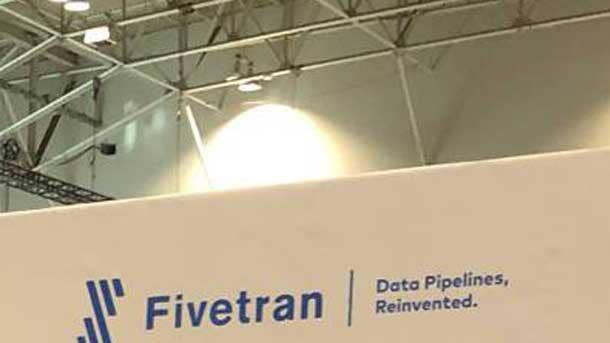
Niche Player: Fivetran
Fivetran has more than 2,400 customers using its data integration platform. In September Fivetran, based in Oakland, Calif., struck a deal to acquire HVR, another data integration and data replication vendor in the Niche Players quadrant of this year’s Gartner report, for approximately $700 million in cash and stock. At the same time Fivetran raised $565 million in Series D funding – largely to cover the cost of the HVR acquisition.
Strengths: Fivetran’s product strategy is focused on cloud data engineering with its fully managed ETL offering for integrating SaaS and on-premises data stores with cloud database targets, the report says. The company’s technology, with its end-to-end data automation, provides low data latency with a low TCO. Highlights of its product are the integrated pre-built schemas for data management and pre-built data modeling packages for specific industries.
Cautions: The report says Fivetran provides limited support for diverse data integration styles. (Note: The report was released prior to Fivetran’s deal to buy HVR and its high-volume data replication technology.) Fivetran offers limited metadata management and data governance support. And the company relies on partnerships to fill functionality gaps in data preparation, data governance and data cataloging.
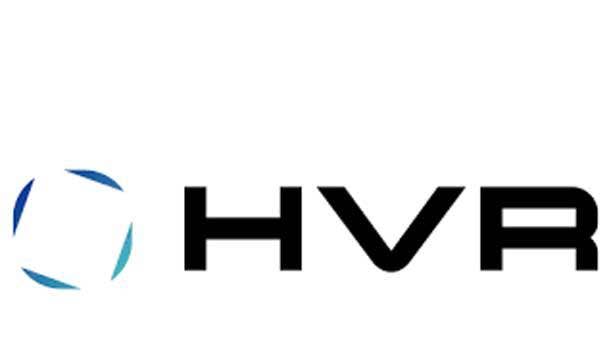
Niche Player: HVR
HVR primarily offers its HVR data integration software for data replication and to support log-based change data capture. The San Francisco-based company’s customer base is more than 450 organizations.
In September HVR agreed to be acquired by fellow data integration software developer Fivetran for approximately $700.
Strengths: HVR wins points for its “singular focus” on data replication and change data capture, for which it offers “strong product capabilities,” according to Gartner. Its software provides enhanced support for complex data transformations and automation of data replication and synchronization tasks.
Cautions: HVR has limited deployment options and very limited availability as a managed service, the Gartner report says. The software lacks support for complex ETL workloads and has limited support for data and analytics governance.
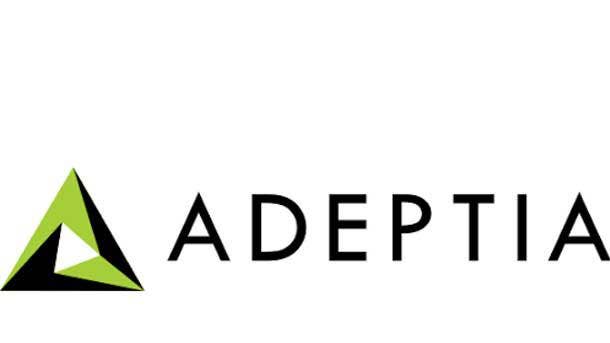
Niche Player: Adeptia
The Adeptia Connect data integration software is used by more than 1,600 customers in diverse industries, the majority in the financial services, insurance and manufacturing industries.
Strengths: Adeptia’s unified platform supports the core requirements of connectivity and adaptors, bulk and batch data delivery, and granular data capture and propagation, Gartner says. Customers give the product high scores for pricing and value and its ease-of-use capabilities that result in high productivity.
Cautions: Adeptia’s products have limited adoption and limited mind share, especially for use in complex data integration scenarios. Finding workers skilled in using Adeptia is a challenge for organizations looking to implement the company’s data integration products and expand deployments, the Gartner report says.

Niche Player: Safe Software
Safe Software is rated highest along the “ability to execute” axis in the Niche Players quadrant, but is next to lowest on the “ability to execute” axis. Safe Software offers the Feature Manipulation Platform with its Feature Manipulation Engine (including FME Server and FME Desktop). The Surrey, B.C.-based company has more than 6,800 customers.
Strengths: The company’s software is most noted for its spatial data integration capabilities and use for geospatial data ingestion, integration and sharing. The product wins high marks for its low-code/no-code data preparation capabilities. And the software’s variety of deployment options, ease of use, and quality of training and support documentation get high grades from customers.
Cautions: Safe Software’s products have limited traction beyond their core use cases in spatial data and have “limited maturity” for metadata management and limited DataOps support, according to the Gartner report.
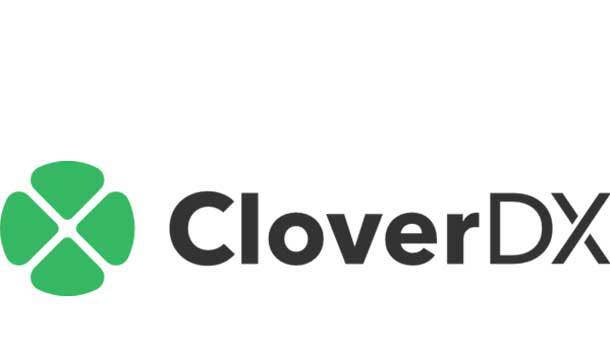
Niche Player: CloverDX
CloverDX is new to the Gartner Data Integration Magic Quadrant and is lowest in the Niche Players quadrant on both the “ability to execute” and “completeness of vision” axes. The company, based in Prague, Czech Republic, develops the CloverDX Data Management Platform and has more than 400 customers in North America and EMEA.
Strengths: The CloverDX software is designed for solving intricate data problems and managing complex data management processes. The company earns high marks for its customer focus in services, deployment, packaging and pricing, according to Gartner, while the product itself excels in data discovery, classification and anonymization.
Cautions: The CloverDX software has limited support for diverse data integration styles and limited metadata capabilities, the Gartner report says. And third-party resources, such as systems integrators and service providers, are not widely available.

Honorable Mentions
A number of companies were not included in the 2021 Magic Quadrant for Data Integration Tools report because they did not fit the report’s criteria. They include Actian, Amazon Web Services, Confluent, DataStreams, eQ Technologic, Google Cloud Platform, Hitachi Vantara, Irion, K@View and StreamSets.